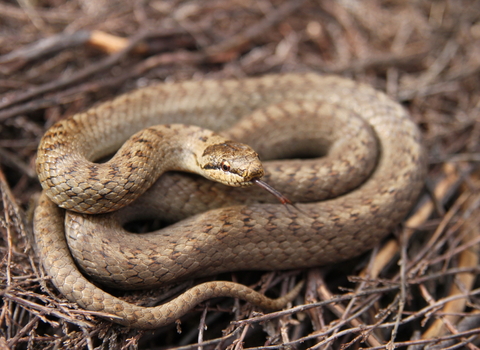
©Steve Davis
Smooth snake
The rare smooth snake can only be found at a few heathland sites in the UK. It looks a bit like an adder, but lacks the distinctive zig-zag pattern along its back.
Scientific name
Coronella austriacaWhen to see
April to OctoberTop facts
Category
Stats
Length: 50-70cmWeight: 100g
Average lifespan: up to 20 years
Protected in the UK under the Wildlife and Countryside Act, 1981. Priority Species under the UK Post-2010 Biodiversity Framework. Listed as a European Protected Species under Annex IV of the European Habitats Directive.
